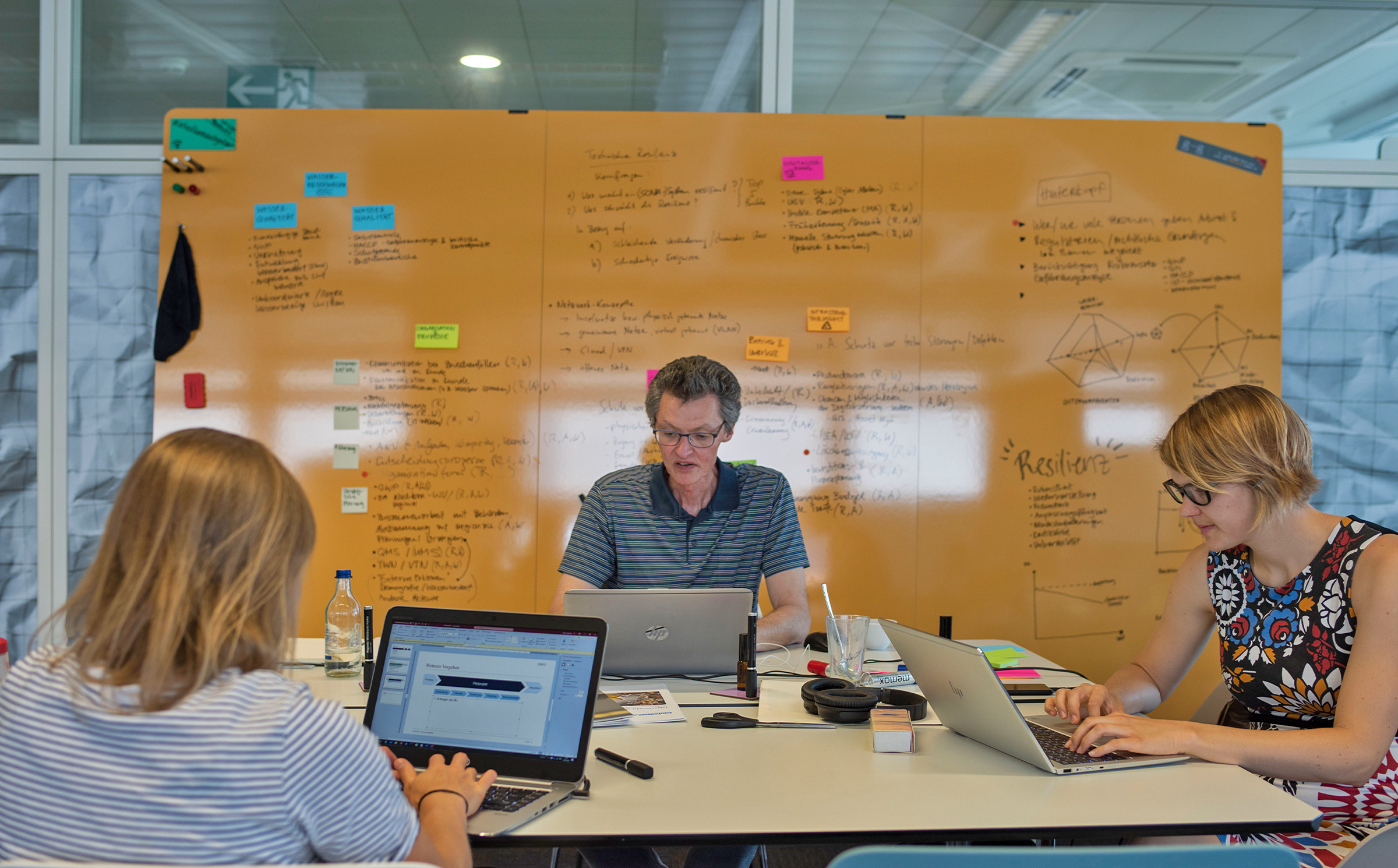Stress test to determine water supply resiliency
Is your water supply resilient? Would it withstand a major incident? Is it appropriately designed to accommodate future demographic, economic, climatological, and technological developments? And what would you have to do today to ensure you could answer these questions affirmatively in 20 years?
In the interest of securing the resiliency of Switzerland’s water-supply systems well into the future, an interdisciplinary EBP team examined these issues in the framework of an innovation project.
Working in close consultation with four water companies, the EBP team, comprised of specialists in the areas of water supply, risk management and digitalization, developed a “stress test for water-supply systems.” The aim of the test is to help the operators of such systems to determine whether they need to take action and, if so, what specific measures they might implement to secure their systems for current and future challenges.
The versatile water-supply system
“Given their status as critical infrastructures, water-supply systems must be prepared for a full range of unpredictable events.”
“Given their status as critical infrastructures, water-supply systems must be prepared for a full range of unpredictable events,” Selina Derksen, a security and water systems expert at EBP, explains. “For regional water suppliers, this task has become more demanding in recent years owing to a growing number of complex challenges. Pesticides and other micro-pollutants have made their way into our drinking water, much of our water-supply infrastructure is overaged, climate change has led to droughts and extreme weather events, cyber risks are on the rise, qualified employees are hard to find, and the price of potable water is often too low to cover operating costs.” Added to these factors is a jungle of standards, regulations and guidelines that burden the operators of our critical water-supply systems.
With staffing shortages common, water company employees struggle to complete their daily administrative and maintenance tasks. As a result, there is little time available to consider such a fundamental issue as supply resiliency. And yet, according to Derksen, taking the time to consider resiliency is essential to the task of identifying risks and developing and implementing corresponding precautionary measures. “This is where we come in, offering the necessary support in a compact approach.”

The benefits of a water-supply stress test
Working together with four water companies, our EBP experts identified the services that would best support the operators of water-supply systems. These were combined into a stress test that yields the following critical information:
- Current-state analysis and critical factors
System operators receive a general assessment of the resiliency of their water-supply infrastructure and operations, including factors of current and future relevance. This information can then be taken into account in the context of strategic decision making. - Standards and requirements
The results of the stress test indicate the essential standards, regulations and guidelines that have already been met, as well as those that still need to be addressed. - Current and future developments
The stress test identifies important current and future developments and the impact that these developments can be expected to have on water-supply operations. These can then be addressed in the context of planning. - Action plan
System operators receive an action plan including cost-efficient, short-term actions, as well as medium and long-term actions that will enable them to establish or improve the resiliency of their water-supply systems.
“Climate change can be expected to pose an even greater challenge to water companies in the future.”
Close consultation with water companies
“Our aim is to provide customized support services to water companies,” says drinking water specialist Martin Rauber by way of describing the EBP team’s approach. “That’s why our stress tests are always based on structured interviews with the water companies’ own experts. After all, they know their companies best. We help them to analyze their particular circumstances without having to first conduct overly time-consuming studies. The goal is to identify the relevant concerns and corrective measures as quickly as possible,” says Rauber about the team’s pragmatic approach.
The scope of a typical stress test includes five steps, culminating in the drafting of an action plan outlining the path to a resilient water supply:

- Step 1: The water company fills out a form addressing all of the relevant factors.
- Step 2: The EBP team conducts a half-day structured interview with the water company.
- Step 3: The EBP team evaluates the content of the interview.
- Step 4: The water company and the conduct a half-day workshop aimed at identifying appropriate actions.
- Step 5: The EBP team completes and presents the action plan.
Contact
Are you curious to see how your water company would fare when subjected to a stress test? Go ahead and contact our project team:

Selina Derksen
selina.derksen@ebp.ch
Manfred Morari
manfred.morari@ebp.ch
Peter Christen
peter.christen@ebp.ch

Franziska Lindström
franziska.lindstroem@ebp.ch
Oliver Blank
oliver.blank@ebp.ch
Simon Schegg
simon.schegg@ebp.ch